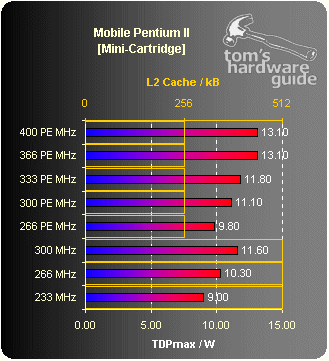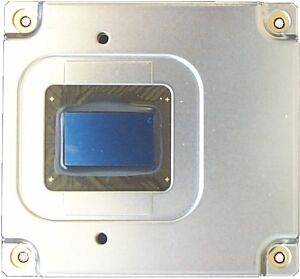Mobile CPU Mania
Features
By
Uwe v.d. Weyden
published
Mini-Cartridge
Parallel to the MMC-1 module a different form factor for mobiles CPUs arrived to the market. The Mini-Cartridge was one of the first Intel processors to implement the on-die level two cache.
When you see the above chart you might stop for a second and ask yourself, why is the 400 PE MHz CPU as hot as the 366 PE MHz CPU? The answer to this is quite strange. While all Mini-Cartridges use 1.6V, the 400 PE MHz CPU only requires 1.55V.
Inside the Mini-Cartridge is the CPU core with cache and thermal diode and sensor.
Stay On the Cutting Edge: Get the Tom's Hardware Newsletter
Get Tom's Hardware's best news and in-depth reviews, straight to your inbox.
Current page: Mini-Cartridge
Prev Page Mobile Module 2, Continued Next Page Mini-Cartridge, Continued
